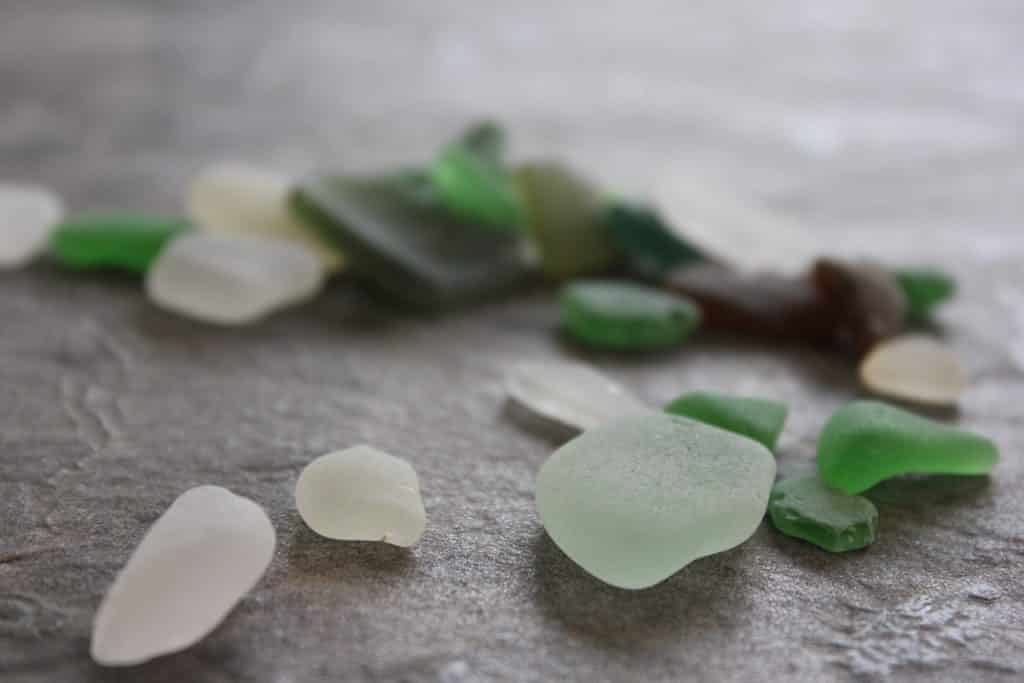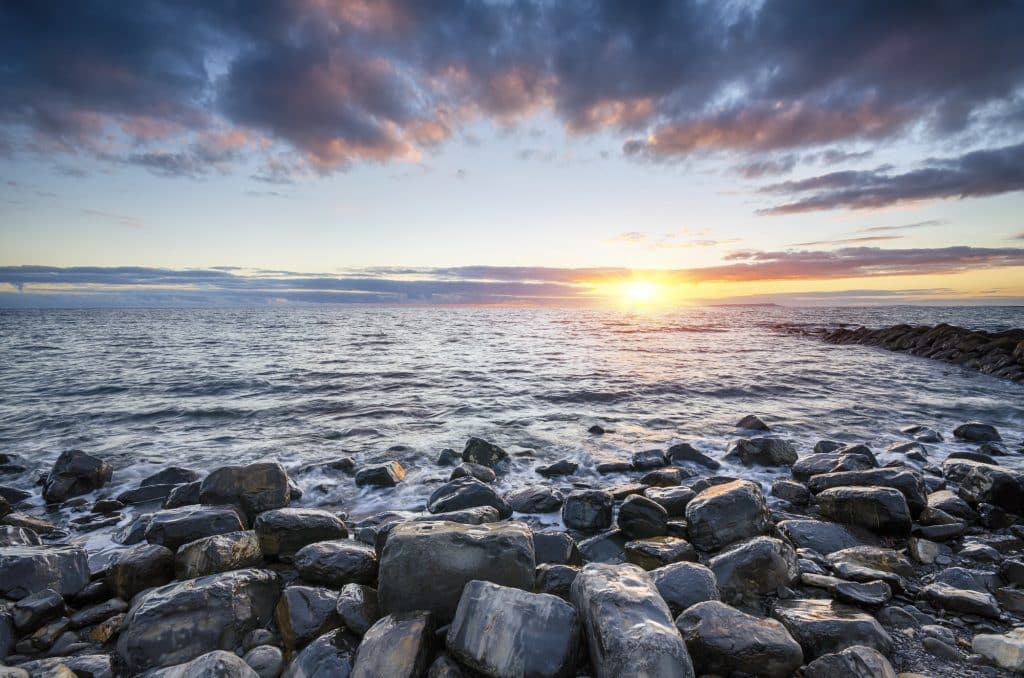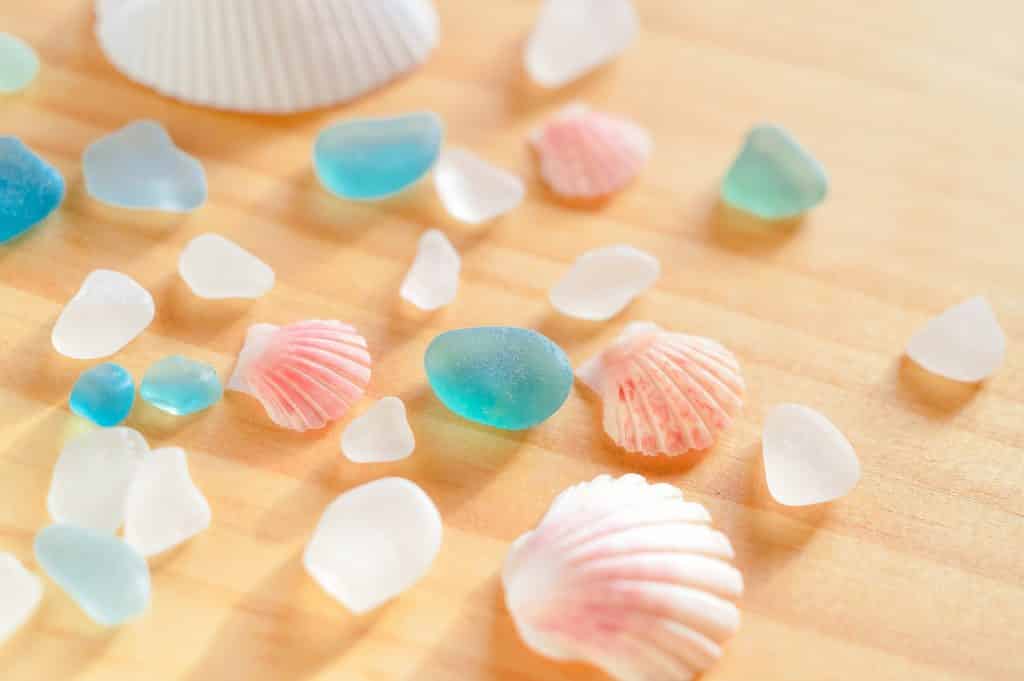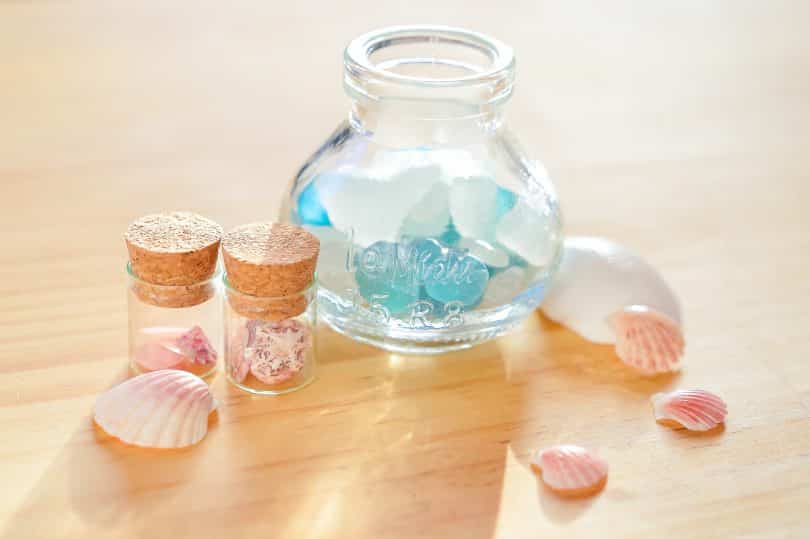If you’ve spent any amount of time at rocky, pebble-covered beaches, combing for lost items or looking for unique stones or other finds, you’ve probably noticed some frosty-looking, rounded bits of glass. Sea glass hunting is a unique hobby where you’ll be looking for remnants of man-made objects that have been weathered down by the elements.
Sea glass is broken bits of glass left over from bottles and jugs that got lost at sea (or more commonly dumped). Over time, they get tossed around in the water and eventually wind up on a beach somewhere. The wind and water continue to wear them down into nicely-rounded, frosted pieces of glass.
If you’re looking for some sea glass art inspiration, look no further than the Etsy marketplace.

What is Sea Glass Used For?
Most commonly, sea glass is used in jewelry-making. You’ll find larger decorative pieces used in decorations for fish tanks, potpourri centerpieces, and in floral decorations (usually at the bottom of a vase, for instance). It’s more common to find imitation pieces that have been mass-manufactured, but few manufacturers have managed to replicate the beautiful appearance of naturally-weathered glass.
Sea Glass Hunting: Best Places to Find Sea Glass
Weathered glass isn’t limited to coastal areas—you’ll also find it inland on the rocky shores of larger rivers and lakes. (Some people opt to call it “beach glass” a more generalized term.)
Anywhere with lots of rocks that glass can get trapped against makes a good place to look. You won’t find them quite as much on sandy beaches. If you’re visiting a beach without lots of rocks, you may have to look further in the water in less-disturbed areas.
You’ll also want to look for high-population areas (with a few exceptions). Touristy areas tend to have a lot of things that get left around or tossed in the water, increasing your chances of finding sea glass. However, we’ve also gotten better about waste reduction in recent years, so finds like this are becoming less common.
A few beaches are known for the amount of glass they carry—often from shipwrecks or accidents where mass amounts of glass were washed up on the shore. Some of them are also fairly secluded, making the perfect spots for sea glass hunting.
Beaches like Davenport are known for the glass you can find there. There’s a story about a flood that swept through the 1970s and carried stored glass pieces from Lundberg Studio out with it. (But with the lax policies on waste handling and disposal back then, people speculate that a lot of it was dumped.) Whatever the case, Davenport glass makes beautiful jewelry now!)
Other sea glass hunting hotspots include Hanapepe Bay Glass Beach, Glass Beach in Port Townsend, and Glass Beach Fort Bragg, just to name a few.

Researching Your Own Spots
The best finds often come from places that you’ve researched and found yourself. They’re the kinds of spots most people wouldn’t immediately think of and tend to be more secluded.
If you’re not sure how to find these areas, start by doing a little digging and brush up on your recent history. Depending on weather and water levels, sea glass takes about 30-50 years to turn into the rounded, frosty pieces commonly seen in jewelry. Look for sites that have had shipwrecks, floods, or other accidents. Also, look for places near glass manufacturers or studios.
Dumping was fairly common practice back in the 60s and 70s, so areas that are home to both beaches and glass studios make the perfect combination. While it’s an awful practice, it doesn’t mean you can’t make the most of someone’s bad habits and turn it into something beautiful! Companies also weren’t often prepared for natural disasters, so it’s not unheard of for lots of product to get washed out during massive floods.
You’ll also want to check weather conditions and tides. Make sure it’ll be clear of storms. The best finds are when the tides are at their lowest, leaving areas normally covered by water clear to walk on.
Things You’ll Need for Sea Glass Hunting
Many hunters will go out with nothing but a water jug, bucket and something to help sift through the sand. If you’re planning to make a day of it, check out our guide on hiking gear so you’re prepared for the day and have a reminder of what to bring. This includes things you’d want on any outdoor day trip, like sun protection, water, etc.
In addition, you’ll want to bring a bucket to store your finds in. You don’t have to thoroughly wash them as you go, but you’ll want to at least do a quick wash so you don’t have a bucket filled with mud or sand. You’ll also want a sifter to help you get through the sand and grime. Trowels are also helpful for digging out things that are buried. You’ll want these on rocky beaches that have recently had high tides, as damp sand can sometimes be a little difficult to dig through with just your hands.

Further Reading
We’ve also included some more resources for you to check out for sea glass collecting, including a find journal, identification cards, and some books with crafts that you can create with your finds. I highly recommend reading up on how to identify the different kinds of glass and learn more about where they come from—some of them have interesting stories that make you appreciate them even more.
Looking for more collecting hobbies? Check out our guides on fossil hunting and rock collecting and share this post with a friend who’d love to join you!







